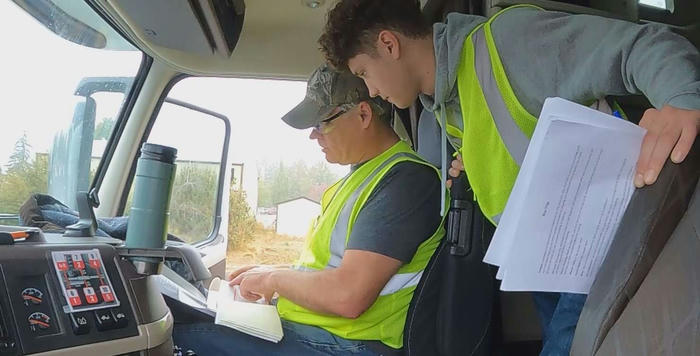The Road to Opportunity: Your Comprehensive Guide to Earning a Commercial Driver’s License
The global economy thrives on movement. From the highways of Texas to the autobahns of Germany, commercial drivers keep supply chains alive, delivering essentials and luxuries alike. With e-commerce reshaping industries, the demand for skilled CDL holders has never been higher. Whether you’re in Toronto, Johannesburg, or Osaka, obtaining a Commercial Driver’s License (CDL) can unlock a career path defined by stability, growth, and independence. Here’s how to navigate this journey.
Understanding the CDL: More Than Just a License
A Commercial Driver’s License isn’t just a credential—it’s a gateway to operating vehicles critical to global infrastructure. In the U.S., CDL holders drive trucks weighing over 26,001 pounds, while in the EU, similar regulations govern heavy-goods vehicle licenses. The license demands mastery of safety protocols, load management, and advanced driving techniques. For example, Germany’s Führerschein der Klasse C requires rigorous training on handling hazardous materials, mirroring the U.S. Class C CDL’s focus on specialized transport. Fail to meet these standards, and you risk losing your license—proof that the role carries both responsibility and reward.

Why the CDL is Your Ticket to a Thriving Career
The numbers speak for themselves. In the U.S., the trucking industry needs over 400,000 new drivers annually to meet demand fueled by online retail. Canada’s logistics sector reports similar gaps, with long-haul drivers earning an average of CAD 65,000 annually. But this isn’t just about driving trucks. CDL holders in Japan can transition into roles like logistics coordinators or hazardous materials specialists, while South African drivers often leverage their experience to launch local freight businesses. With entry-level salaries starting at $46,000 in the U.S. and climbing to $77,000 for seasoned professionals, the financial incentives are compelling.

Choosing the Right CDL Class: Align Your Ambitions
Not all CDLs are created equal. The Class A license, required for 18-wheelers in the U.S. or articulated lorries in the UK, opens doors to cross-country routes. In contrast, a Class B license—ideal for regional delivery drivers in France or municipal waste operators in Italy—focuses on single-unit vehicles. Meanwhile, Class C certifications cater to niche sectors like passenger transport in Japan’s bustling cities or fuel tanker operations in Germany. Your choice hinges on career goals: Do you crave the open road, or prefer a local schedule? Answering this will shape your training path.
Training Programs: Fast-Track Your Future
CDL training blends classroom theory with hands-on practice. In the U.S., programs like those at Lone Star College condense training into 7 weeks for full-time students, while part-time options stretch to 14 weeks. European institutions, such as Germany’s DEKRA Academy, emphasize road safety and EU compliance in 12-week intensive courses. Tuition ranges from $4,000 to $5,500 in North America, but funding options like Indiana’s Next Level Jobs program can offset costs. Key training components include:
Regulatory Knowledge: Mastering transport laws in your region.
Vehicle Inspection: Learning pre-trip checks to avoid fines.
Maneuver Mastery: Perfecting reversing, coupling, and highway navigation.
Pro tip: Seek programs with job placement partnerships—many U.S. schools guarantee interviews with major carriers post-graduation.
The Roadmap to Your CDL: 5 Steps to Success
Eligibility Check: Ensure you’re at least 18 (21 for interstate U.S. roles) with a clean driving record.
Permit Acquisition: Pass a written exam covering air brakes, cargo security, and traffic laws.
Enroll in Training: Opt for accredited programs—South Africa’s RTMC-approved courses, for instance, prioritize local road conditions.
Pass Skills Testing: Demonstrate vehicle control and on-road competence.
Secure Endorsements: Add qualifications like tanker or hazardous materials handling to boost employability.
Career Horizons: Beyond the Driver’s Seat
A CDL isn’t a dead-end job—it’s a launchpad. In the UK, drivers transition into fleet management, overseeing routes for companies like DHL. Others, like Canada’s logistics coordinators, use their on-road insights to optimize supply chains. Emerging markets like South Africa see CDL holders branching into freight brokerage, while Japan’s aging population drives demand for medical transport specialists. The industry’s 5% projected growth over the next decade ensures longevity, and perks like mileage pay and retention bonuses sweeten the deal.
Your Next Move: Start Today
The world relies on CDL holders to keep commerce moving. With training programs tailored to diverse schedules and financial aid easing upfront costs, there’s no reason to wait. Research schools in your region—whether it’s Midlands Technical College in the U.S. or a TÜV-certified academy in Germany—and request details on curricula and job placement rates. The road to a rewarding career begins with a single step: enrolling in a CDL program. Your future is behind the wheel—grab it.
